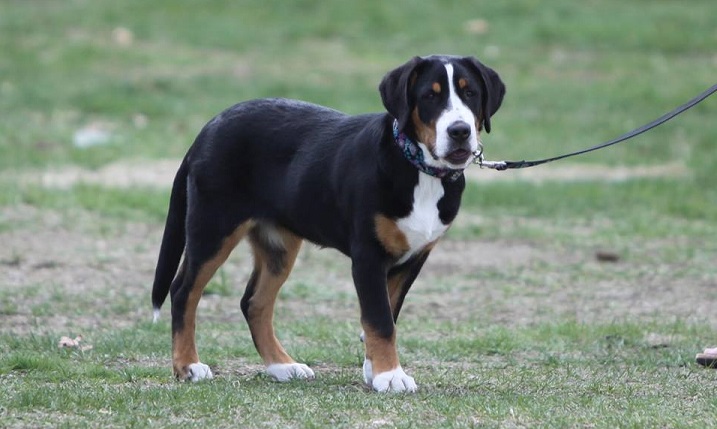Regarding
Temperament

I feel that the Greater Swiss Mountain Dog has suffered from widespread misrepresentation. Our breed is being touted as the “ideal family companion” in a variety of publications, on a host of websites, and on the over-aired Animal Planet segment. This image has many damaging consequences for our breed.
Those attributes which make for an ideal working dog are often less than ideal for an urban companion.
The temperament of the Greater Swiss Mountain Dog is reflective of its heritage as general purpose farm and watch dog. Those attributes which make for an ideal working dog are often less than ideal for an urban companion.
Let’s take a look at what the “ideal family dog” might be. Assuming that the average American family is composed of a combination of adults and children, living a busy lifestyle in an urban environment, I might define the “ideal family dog “ as one that is born generally well- mannered; is easily trained; good natured; doesn’t bark in excess; has very few health problems or concerns; is always friendly with strangers; who demands very little from his family; required little if any entertainment; and could easily be walked throughout the neighborhood by even the youngest members of the family. Now, ask yourselves, does this define the Greater Swiss Mountain Dog? I think not. (Please refer to "Is a GSMD Right For You?")
In examining the breed standard which was written by the Greater Swiss Mountain Dog Club of America and which ultimately became our official AKC breed standard in 1995, the description of the GSMD temperament reads:
“Bold, faithful, willing worker….alert and vigilant…”
Now, let’s define “BOLD”(the first adjective used to describe the GSMD in our standard). Random House Dictionary definition: bold 1. courageous and daring 2. not hesitating to breach the rules of propriety 3. fearless, brazen, forward; may refer to manners in a derogatory sense…
Working breeds do not match every lifestyle and require careful consideration as bold and dominant temperaments can be challenging for inexperienced dog owners.
Like it or not, these are the very words chosen to describe the temperament of our breed. One must, of course realize that a bold dog is not synonymous with a bad- tempered dog , but could perhaps be indicative of a pushy dog; one that can be hard to train; one that requires a commitment to proper socialization; and one that must be taught “pack leadership”. “Alert and vigilant” would indicate that the dog is watchful, perhaps wary of strangers; prone to barking; protective of territory, etc. These adjectives are used in many breed standards for dogs in the Working group. Working breeds do not match every lifestyle and require careful consideration as bold and dominant temperaments can be challenging for inexperienced dog owners.
The original FCI (European) standard for the Greater Swiss Mountain Dog describes the breed’s temperament as:
“Confident, alert, watchful and fearless in everyday situations. Good natured and devoted towards those familiar to him. Self assured with strangers. Medium temperament.”
Let’s be honest and forthright to those new to the breed.
What we must be most committed to is educating prospective puppy buyers about the TRUE characteristics of our breed, good and bad, desirable and undesirable. The end result is perhaps a smaller “market” for our puppies, but a more successful outcome with their new homes.
Please, let’s not paint the Swissy as a tri-colored Labrador Retriever. Let’s be honest and forthright to those new to the breed. Let’s rise above the dollar signs and work to preserve the true characteristics of this breed, and instead of molding them to fit our lazy American lives, let us continue to give them a purpose and search out the very best environments in which their instincts may flourish.
Karen Conant
